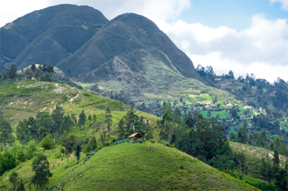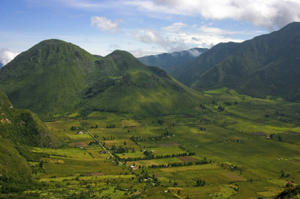Industry News
June 18, 2010We Arrived In Duran; An Ecuadorian Trainride

Ecuador is in the midst of a great revival in their transportation industry. Over the years their rail system, one of the most important modes of travel throughout the country, had become dilapidated and in most areas unusable. President Rafael Correau had said he would revive the rail system. Since his election in 2006, he is keeping that promise.
On June 18, 2010, I arrived in Duran, Ecuador on a business trip, to view the new rail cars and rail yard. At one time, this town had been the main train station for the coastal region. During its golden years, 90% of Duran and Yaguachi economy was based on the railroad system. But that was a very long time ago, and now they are just wayside villages.
The cars are beautiful. The coach cars, although 50-60 years old, had been completely refurbished with beautiful polished wood, deep leather and hanging lace curtains in the windows. It was like turning back time.
There was an buzz of excitement from everyone at the Duran yard. Although I did not know exactly what everyone was excited about, I knew it was something noteworthy. Then, I was approached by the Manager of the yard who told us they were about to take the train for a trial run. He then ask if I would like to ride. Of course, I accepted. Not everyone there was being given this opportunity, and I began to realize this was what the buzz was about. This would be the first time rail cars had moved through this part of the country in 30 to 35 years. A 24 kilometer journey from Duran to Yaguachi. I climbed aboard as the 80 year old vapor steam engine was preparing for the trip.
Everyone on the train was excited. There were only about 20 people in my car. There were police cars ahead of the train ready to escort us out of the station. As the train passed through town, the engine whistle blew, and people came out of the surrounding homes and businesses. Police cars preceeded the train route in order to stop the traffic at cross sections, and there were no lights or crossarms to keep cars and people off the suddenly operational tracks. Children and adults alike were running and waving. As we pulled out of the station you could see whole families, fathers and mothers with their babies on their hip and their young at their feet amazed at the site of the train. An operational train - something most of the people along these tracks had not seen in their lifetime!
News media was documenting the event. It was a celebration. And here we were, riding in history. After years of poverty and despair, there was excitement and hope at what the future would hold for the communities on this route.
 As I rode the tracks, I saw people coming out of shacks along the way. They rushed towards the tracks yelling and waving, big smiles on their faces. Dogs would chase the train running along side barking at something so foreign to them. Linemen rode on the sides of the engine they carried long sticks. The train would stop and these linemen would use the long sticks to lift the power lines so the train could pass under them. Yes, there had been no activity on these tracks for so long, the light lines hung too low for the train to go under.
As I rode the tracks, I saw people coming out of shacks along the way. They rushed towards the tracks yelling and waving, big smiles on their faces. Dogs would chase the train running along side barking at something so foreign to them. Linemen rode on the sides of the engine they carried long sticks. The train would stop and these linemen would use the long sticks to lift the power lines so the train could pass under them. Yes, there had been no activity on these tracks for so long, the light lines hung too low for the train to go under.
I heard the people shouting as they raised their hands in the air; “Viva Connea! Viva Connea!” Long live the President! The children looked on in awe at the sight of the train grinding through the fields. More touching, the elders were jubilant and their eyes reflected the optimism of their youth.
The station at Yaguachi is new and made of beautiful wood from the coastal area. As the train successfully pulled into the station people cheered at its arrival.
When I exited the train, people were laughing and talking, hugging and shaking hands. Every rider was so pleased to be a part of this journey. The railroads are being re-built and with this comes hope.
It will take many wooden crossties to complete this task. The government thought they would have to harvest Huayacan and Moral Fino trees from deep within their Amazon forest. Only small areas of these trees were left and getting to them would cause tremendous ecological damage to the areas. Some of the Amazon trees are close to extinction. There were really not enough trees available in Ecuador to ensure that all of the rail system could be updated and made safe. This project could be devastating for the future of their forest areas; yet, without it, the devastation of poverty would continue throughout the populated areas. Through hard work on their government’s part, they are finding other options which will not be as damaging to the future of their eco- system such as importing the crossties from other countries. They believe this will preserve the future of Ecuador’s Amazon rainforest by keeping the trees there safe from harvesting.
